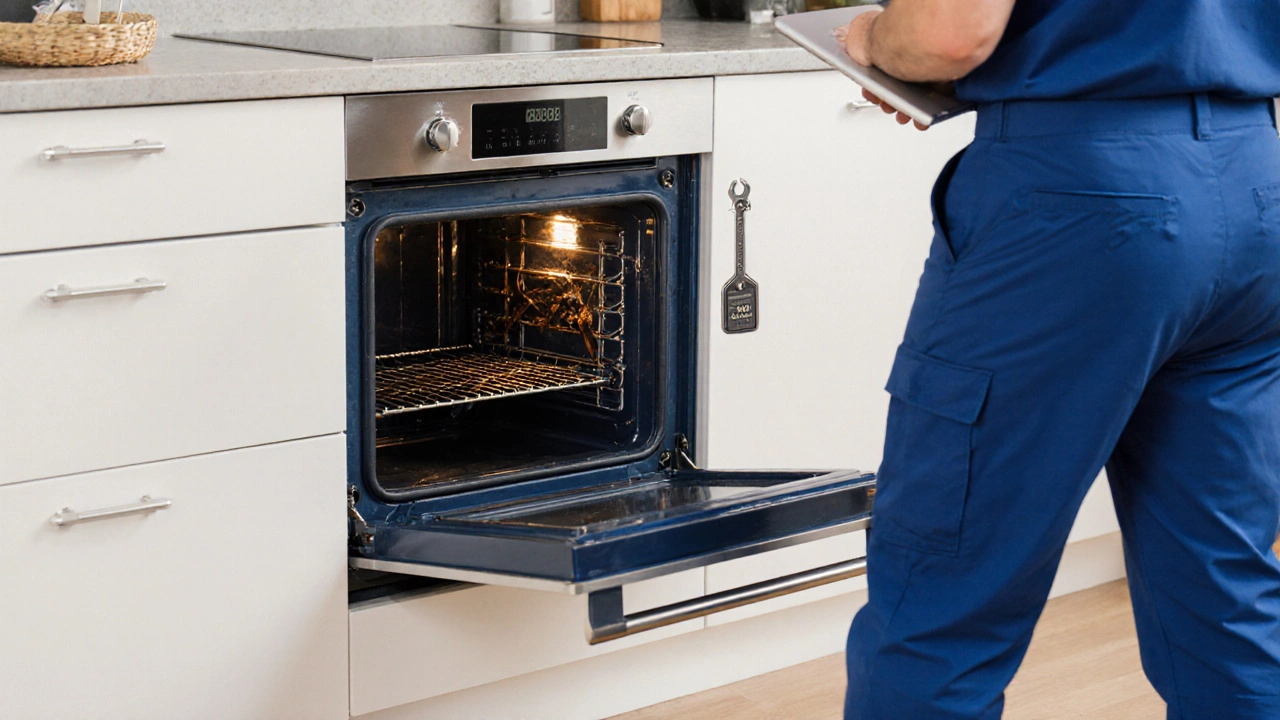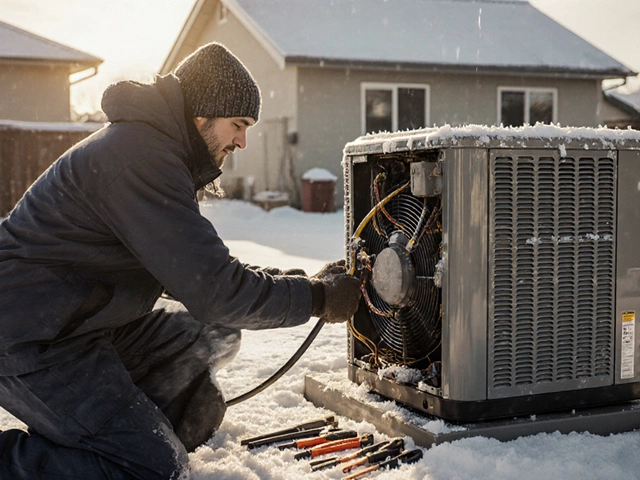Sticker shock isn’t just for luxury cars—it’ll hit you hard if your fridge suddenly stops cooling and the repair guy drops the bad news. Some folks think a broken handle or a sticky door gasket is a crisis. Not even close. There’s one repair, hiding deep inside almost every fridge, that homeowners dread: the compressor. Most people don’t even know what it is until it fails. Once it does, your wallet’s on the line. Today, let’s break down exactly what’s hiding beneath your fridge and why fixing it can cost more than the appliance itself.
The Compressor: The Heart (and Wallet-Drainer) of Your Fridge
If you’re looking for the single most expensive refrigerator part to fix or replace, it’s the compressor—hands down. The compressor is the pump that keeps the refrigerant moving through the coils, pulling heat out so your milk stays cold and your veggies don’t turn into science experiments. When it fails, nothing else in your fridge stands a chance. The price isn’t just based on the part itself either; compressors are heavy-duty, sealed, and pressurized. Most fridges use reciprocating or inverter-type compressors, both carefully matched to the model. Replacement isn’t quick or simple, since it involves opening the sealed refrigeration system. There’s refrigerant to recover, brazing of copper lines, vacuum leak checks—plus a whole host of legal and environmental rules about handling the gases inside.
A new compressor can run you anywhere from $300 to $700 or more, but the labor is where the pain really hits. Total bills above $1,200 aren’t rare, especially in larger, high-end models. At that point, people start debating the wisdom of repair versus buying a brand-new fridge. One survey from 2023 by HomeAdvisor showed that less than 35% of homeowners choose to replace a broken compressor; the rest go shopping for a new fridge instead. Why? The cost just doesn’t make sense over a certain age (often 7-10 years old), especially as warranties run out. Some high-end built-ins and commercial units cost even more—parts can be $1,000, and labor, given the complexity, might double that.
Want to see just how much more compressors cost compared to other parts? Check out this data table below, based on 2024 averages for standard refrigerators in the U.S.:
| Fridge Part | Typical Replacement Cost (Parts + Labor) |
|---|---|
| Compressor | $500 - $1,200+ |
| Sealed System Leak Repair | $400 - $1,200 |
| Control Board | $250 - $700 |
| Evaporator Fan Motor | $150 - $400 |
| Thermostat | $150 - $350 |
| Defrost Heater | $100 - $300 |
| Ice Maker Assembly | $300 - $600 |
Every refrigerator model is a little different, but this gives you a good sense of where your money’s going and why the compressor is the king of high repair bills.
Why does replacing this part cost so much? Well, besides being expensive to buy, you need a licensed professional for the job—someone with certifications to handle refrigerants safely, vacuum out all the old gas, and ensure there are no leaks. Some shops won’t even take on these jobs for older fridges because the risk of hidden problems (like microscopic cracks in the copper lines) is just too high. Plus, new refrigerant rules mean the gases your fridge uses today (like R600a or R134a) are different from those used a decade ago. If your repair tech makes a mistake or uses the wrong refrigerant, the whole system can burn out, and there’s no fixing that for cheap.
Sealed System Nightmares: Leaks and Blockages
When people hear "sealed system problem," it’s the second-worst phrase after "compressor failure." The sealed system includes the compressor, evaporator and condenser coils, and tubing that carries the refrigerant. These components are hermetically sealed and almost never designed to be opened up. Lose the pressure or spring a leak, and you’ve got a big, expensive headache.
Most leaks show up gradually. Maybe your ice cream goes soft or there’s frost building up in odd places. A tech will often use an electronic sniffer to find leaks, but getting into those tiny copper tubes without making things worse is a major pain. Replacing or repairing these lines means recovering refrigerant, soldering, and re-pressurizing the system. Even worse, a blockage inside the tubing (often caused by moisture or sludge) can be nearly impossible to find until the system’s already torn apart.
Costs for sealed system repairs almost always rival compressor replacements. It’s not uncommon to see bills of $500 to $1,200, especially if technicians have to chase leaks, patch them, vacuum the system, and re-gas everything. These types of problems are also notorious for "stack-up" costs—finding a leak after replacing a compressor, for example, means double the labor, plus extra parts. In the real world, a lot of repair shops simply won’t even take on sealed system work for mid-priced fridges past a certain age, since there’s so little margin for success. Some high-end repair shops will, but expect rude price tags.
One wild stat: A 2022 survey of independent appliance techs showed more than 60% refuse sealed system repairs on fridges over 10 years old, even for long-time clients. It’s not that they don’t want work. It’s that any fix could open up a can of worms no one can predict. There are horror stories of recurring leaks, pinhole corrosion from the inside out, or even entirely scrambled electronics if refrigerant oil fouls a circuit board. All those reasons push sealed system repairs into the realm of "expensive and risky"—and make most techs recommend replacement, not repair.
If you think you’ve got a sealed system issue, don’t waste time. Early detection (like noticing your fridge is running longer but not getting as cold) can save you from disaster. Use a freezer thermometer, keep an eye on your grocery spoilage, and get a pro in fast if things seem off. The earlier the problem’s caught, the more likely you’ll avoid the worst-case repair bills.

When Control Boards and Sensors Go Haywire
Not all expensive fridge repairs are mechanical. Electronics have taken over most appliances built after 2010, and modern refrigerators are packed with tiny control boards, digital sensors, and fancy displays. These are mini computers, interpreting temperature readings, controlling fans, and running compressors on smart cycles. If something goes wrong—power surges, water drips, or manufacturing defects—these boards can fry, often unpredictably.
The main control board acts like the brain, and a failed board can make your fridge act possessed: lights flicker, beepers go off, fans stop spinning, or you get no cooling at all. Repair techs love to see these cases because, honestly, the fix usually takes under an hour once the board arrives. But the boards are not cheap. A replacement board (especially for a fancy touch-screen or French-door fridge) can run $300 to $700, while sensor boards and interface modules usually add $150 to $400 each to your bill.
Where it gets tricky is diagnosing which board is causing trouble. Sometimes, techs swap in the wrong part, or a faulty sensor leads to replacing the main board when it wasn’t actually bad. DIY-ers sometimes buy boards off the internet, only to find their exact model needs a firmware update from the factory, or worse, the board they’ve got isn’t compatible. These headaches add extra labor and repeat visits—meaning higher final costs. Rare brands (like luxury European units) or outdated models may have control boards that are near-impossible to source, which can raise replacement prices through the roof.
Here’s a pro tip: surge protectors aren’t just for computers. If your fridge is running on a circuit that might get hit by lightning or other surges, plug it into a surge protector built for major appliances. You might save yourself a $500 repair bill down the road.
Hidden Costs: Less Obvious Expensive Fridge Fixes
While compressors, sealed systems, and control boards steal the spotlight for huge repair bills, there are some less obvious repairs that can sneak up and smack your budget. Ever had an ice maker suddenly stop pumping out cubes, or a water-in-the-door system spring a hidden leak? These repairs seem less dramatic but can still wring hundreds out of your savings—especially since many ice makers and water dispensers are sold only as complete assemblies now, not individual parts.
Here are a few surprise high-cost repairs:
- Ice Maker Replacement: Modern ice maker assemblies (especially for dual ice bin or high-capacity fridges) can cost $300 to $600, parts and labor. Add in another $100 if your water line is hard to access or if there’s hidden damage from leaks.
- Evaporator Fan Motor: Essential for cooling performance, the fan motor can cost $150 to $400 with labor. On some built-in fridges, getting to the motor requires taking half the unit apart.
- Defrost Heater and Sensors: When these fail, your freezer turns into a frosty brick and air can’t circulate. Repairs run $100 to $350, but if the problem’s been ignored for months, you might have mold, fouled insulation, or even dead electronics to fix.
- Doors and Hinges: Believe it or not, a busted door hinge on a high-end fridge may require a full door replacement if the manufacturer has discontinued smaller parts. One custom stainless-steel door from a major brand? Try $700–$1,500 installed. Ouch.
What about labor costs? The national average for appliance repair runs between $100 and $200 per hour, depending on your location. Emergency or after-hours calls typically bump the hourly rate by 30% to 50%. If you’ve got a built-in or integrated fridge, tack on even more time and labor—some models are so tight in cabinets it takes a two-person crew just to access the compressor or sealed system components.
Now, here’s a trick many people don’t know: a lot of high-end fridges offer extended “sealed system” warranties—sometimes as long as 5 or 10 years. These typically cover parts (but not labor) for compressors and other costly sealed system work. Always check your owner’s manual or manufacturer website before shelling out for an expensive repair. You might only have to pay labor, which cuts your cost in half or more. And if you’re out of warranty, ask about discounts or manufacturer concessions—sometimes brands offer discounted parts as goodwill to preserve their reputation.
If you’re facing a big repair and the fridge is approaching 10 years old, make sure to check energy efficiency ratings for new models. A brand new fridge might use 30-50% less energy per year thanks to updated standards like ENERGY STAR, which can save serious cash on power bills. For some folks, that’s enough to justify new over repair, even before you drop $1,200 at the shop.
So next time you hear a weird noise from your fridge or catch your ice cream turning mushy, remember: not all repairs are equal. The expensive refrigerator repair—almost always the compressor, sealed system, or control board—can turn into a financial gut punch. Regular cleaning, early maintenance, and a sharp eye for small problems can head off the most painful bills. Sometimes, though, when you’re handed a quote that’s more than half the price of a new fridge, it’s time to do some tough math and decide if repair is really the best bet.





